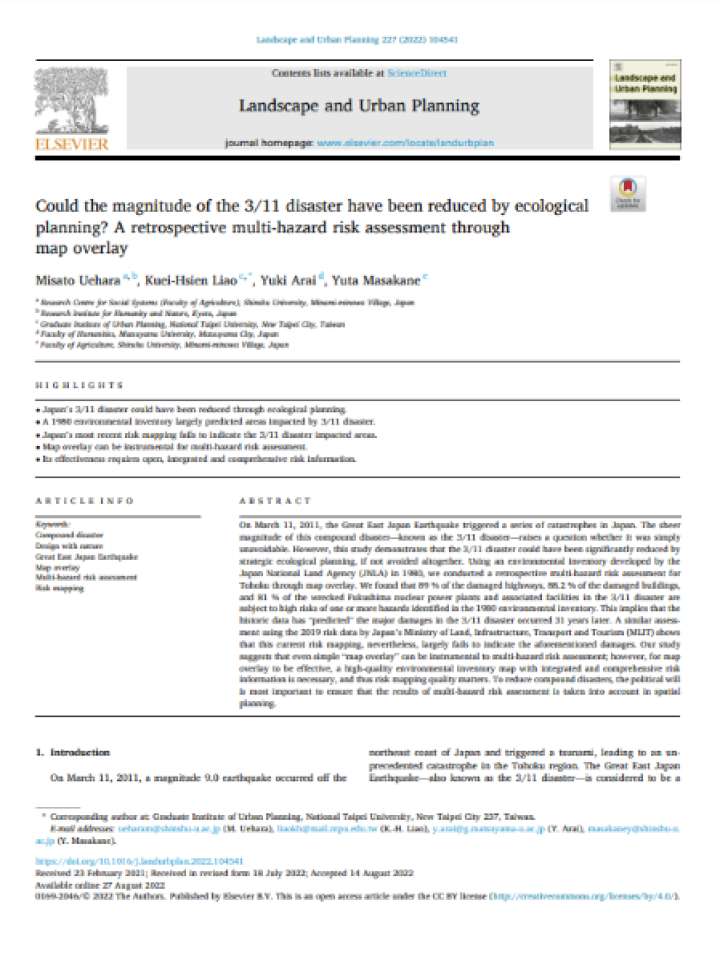Could the magnitude of the 3/11 disaster have been reduced by ecological planning? A retrospective multi-hazard risk assessment through map overlay
On March 11, 2011, the Great East Japan Earthquake triggered a series of catastrophes in Japan. The sheer magnitude of this compound disaster—known as the 3/11 disaster—raises a question whether it was simply unavoidable. However, this study demonstrates that the 3/11 disaster could have been significantly reduced by strategic ecological planning, if not avoided altogether. Using an environmental inventory developed by the Japan National Land Agency (JNLA) in 1980, the researchers conducted a retrospective multi-hazard risk assessment for Tohoku through map overlay.
The research found that 89 % of the damaged highways, 88.2 % of the damaged buildings, and 81 % of the wrecked Fukushima nuclear power plants and associated facilities in the 3/11 disaster are subject to high risks of one or more hazards identified in the 1980 environmental inventory. This implies that the historic data has “predicted” the major damages in the 3/11 disaster occurred 31 years later. The study suggests that even simple “map overlay” can be instrumental to multi-hazard risk assessment; however, for map overlay to be effective, a high-quality environmental inventory map with integrated and comprehensive risk information is necessary, and thus risk mapping quality matters. To reduce compound disasters, the political will is most important to ensure that the results of multi-hazard risk assessment is taken into account in spatial planning.
Explore further
